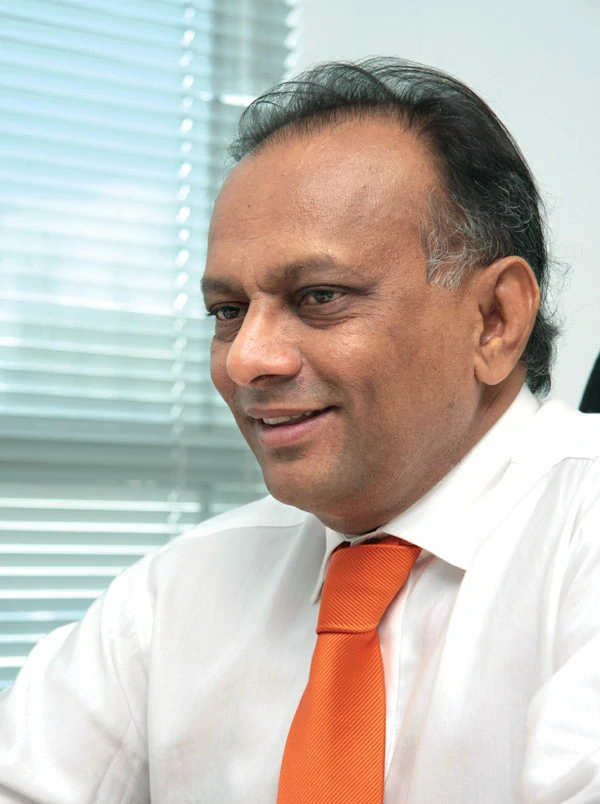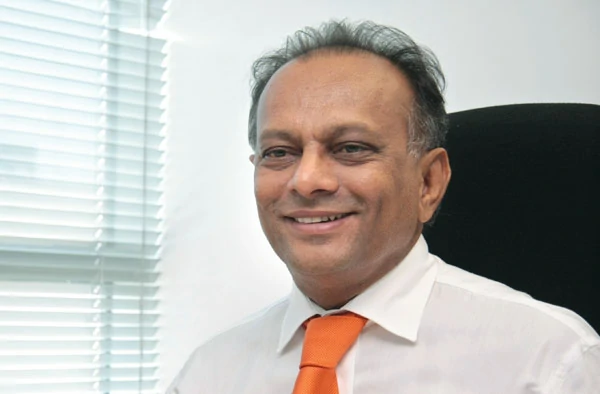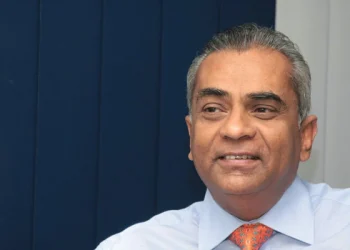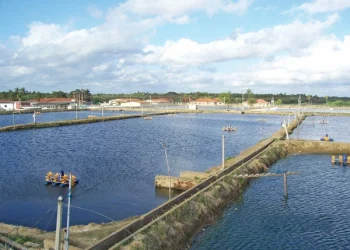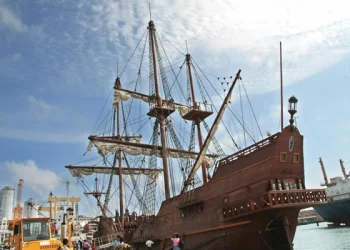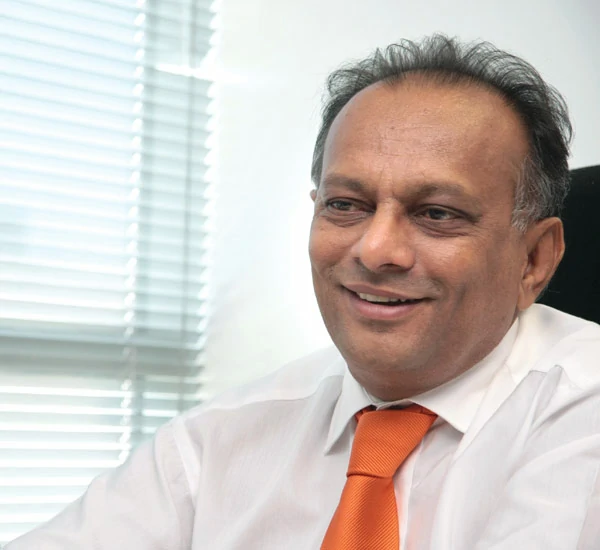
Chandra Wickramasinghe, the Chairman/Managing Director of Connaisance de Ceylan has over two decades of experience in the tourism industry. He is a pioneer in this sector and it is his concepts of eco-cultural tourism and Ayurveda that have gained much popularity in Sri Lanka today. Being one of the leading inbound tour operators to secure the French market, Chandra Wickramasinghe emphasises the need to give qualitative services and facilities to tourists that visit the country. Furthermore, he stresses the importance for Sri Lanka to preserve its natural beauty without being consumed by artificial constructions. His expertise and thoughts on developing the industry are many and he has not stopped with Connaisance de Ceylan, Chandra Wickramasinghe will be launching his latest hotel brand Maalu Maalu in the eastern coast of Passekudah in the near future.
By Udeshi Amarasinghe
Photography by Menaka Aravinda
You have vast experiences in the hospitality industry. Can you tell us how you got into this sector and your journey so far?
My entrance into the tourism industry was in the 1980s. At that time it was very difficult to secure employment in Sri Lanka. Therefore, I completed my Diploma in Tourism at the Sri Lanka Technical College and during the same time studied French. This enabled me to obtain employment at a hotel. Then I followed a course on becoming a tour guide lecturer at Sri Lanka Tourism, which gave me an entry point into the trade. The standards were very high during that time and thus even to become a tourist guide lecturer was very difficult. There were very few people who could speak foreign languages and in order to be a tourist guide lecturer one had to have a high level of proficiency in the language on par with the foreigners.
I worked in a hotel at the reception in the South and then went to France for a couple of years and returned to Sri Lanka as a tour leader. Upon my return I realised that there was not a single tour operator in the country that was operated by people who had experience in the industry – such as travelling, hospitality and providing tour guide facilities. At that time most of the inbound tour operators were tea brokers or colonial companies.
Thus, in 1981 I formed Connaissance de Ceylan to fulfil a much-felt need in the industry. As I was fluent in French it was very easy for us to break into the market. Knowing the language was an advantage. This was the first time that we had a very big opening into the French market. Business was very good in the early 80s, then there was a slight drop and then it picked up again during the latter part of the decade. However, it must be noted that French tourists have been coming to Sri Lanka from the 1960s. The UTA French Airline was the first European airline to fly to Sri Lanka.Thus, the French market was already quite steady when we started. Approximately 20-25,000 French tourists used to visit Sri Lanka at that time.
Due to the instability during the latter part of the 1980s and early 1990s, the tourism industry was very vulnerable as there was not a steady flow of tourists into the country. However with all the difficulties we were able to remain in the market but it was difficult to sustain because we did not have our own hotels. In Sri Lanka at that time tour operators owned almost all the rooms. The industry was dominated by vertical integration. It was very difficult for newcomers to come in, thus to overcome this challenge I ventured into hotels.
My interest was to build a hotel in the centre of the Cultural Triangle as the tourists that we were catering to were more interested in the cultural aspects of the country as opposed to those who come to Sri Lanka to enjoy the beaches. Since this was the beginning of cultural tourism I too wanted to add the eco-cultural tourism aspect to the industry.
Eco-tourism itself is very hard; it is very difficult to practice in a country like Sri Lanka, especially because of the dense population. Therefore, I wanted to blend eco and cultural tourism, which is why we started Culture Club in 1994. It was the first hotel of its kind to be built after the instability in the country. We didn’t stop there, from Culture Club we went into Kandy. At that time there were only a handful of good hotels in Kandy. Just like the Culture Club where we based the design on a theme and used colours based on the Dambulla era, in Kandy the Le Kandyan was based upon real Kandyan architecture.
At that same time we focused on providing transport to tourists from the airport to the designated hotel so that they could have an extra night in the Cultural Triangle, which gave us the opportunity to take them to unvisited places such as Madirigiriya and Ritigala.
The Sri Lankan identity needs to be maintained as we have a fantastic culture and architectural masterpieces. I have created a fusion of these two at my new property Malu Malu in Passekudah.
A few years ago Connissance rebranded its hotels to Amaya, which is now a public quoted company. However, Connaissance de Ceylan, our travel arm, is now privately owned by me, which I should say is the most lucrative of the businesses. Most of our clients are FITs and special interest groups.
Since the end of the war, tourism is picking up and we are doing quite well. We are also preparing ourselves for the influx that will occur during the next few years.
What is the strength of Connaissance de Ceylan?
One of our major strengths is that all our staff are fluent in French. Furthermore, we are not only strong in the French market but also the Spanish market. We are currently the biggest inbound tour operator from Spain. We have also ventured into the Italian, Belgium and even Indian markets.
The strength of our company is that we are like an a la carte operator; we are like an architect, designing something different for every client. We do not have a ‘set’ programme. We do everything by ourselves; from designing to marketing and selling. Our operators are quite different to any other operator in Sri Lanka. Our major strength is that we know Sri Lanka very well; we know our customers and we speak their language – especially in the French sector.
Another aspect we look into is sports tourism. We managed the biggest private cricket carnival, which was the Golden Oldies Cricket Carnival. We had about 600 people at our Air New Zealand event. Then about two years back we handled an adventure event called Raid Amazon where about 200 women from France came for the adventure race. Thus these are the things that set us apart from any other tour operator based operations. We are specialised on tailor made tours on a la carte.
You were the first to invest in the Kandalama area. Can you tell us about this?
The reason why I decided to build the hotel in Kandalama was that I mainly wanted to create a theme hotel on the concept of a village. Therefore, we needed to build the hotel near a lake. Furthermore, the hotel had to be within the Cultural Triangle. Naula being the centre of Sri Lanka I wanted to build in close proximity to Dambulla and I did not want to venture into Habarana and Sigiriya as they were already developed. I was able to acquire this particular land from the Mahaweli Authority. There were no roads, electricity or telephone facilities when we went there, but we developed our own infrastructure in that area. I selected this location because it is a central location and there is easy access to any cultural site. Thus a guest could go out for the day and easily come back and relax. We wanted to create that atmosphere and we succeeded by securing the location in front of the Kandalama Lake. Kandalama Lake is one of the most beautiful places in Sri Lanka. You can go and see the mountains, do trekking, boating in the lake, cycling to Sigiriya and much more.
However after the rebranding of the hotels I am not directly involved in the day to day management of the properties.
The concept of eco hotel was one of your ideas and many other hotels are also doing that. What prompted you to look in that direction?
During the period of 1992-1994 the eco concept was already there, but what I did was not purely eco tourism, it was more of eco cultural tourism. If you look at the buildings, at the Culture Club (Amaya Lake Kandalama), it is the only building in this area, or only hotel in Asia where you have about 8,000 sq ft without air conditioning or even a fan. The restaurant, bar and lounge area are without a single fan, which is fantastic. We studied the air circulation and the natural breeze that comes from the lake and the architect incorporated this into the structure. We thought about carbon emissions more than 12 to 15 years back. We were the first people to take bullock carts and use them for transport within the premises. My focus is on creating theme resorts. Of course every aspect is eco-friendly at Culture Club, we have about 700 Kohomba trees. We respected the old irrigation reservation systems and the eco-systems of the lake. We did not change anything around the lake. The success of this particular resort is the respect we give to nature and living with nature. Guests have to walk to their rooms; there are no escalators or anything elaborate. It is very simple and nice. Even walking between the chalets and the reception is nice after a good meal.
I never sought recognition for my work and thus never tried to buy green labels from certain operators. That is why we have never received any award, because we are not paying the organisations to get awards. Our reward is that we receive the best return on investment and satisfaction of our clientele.
You were one of the pioneers of Ayurveda spas in Sri Lanka. Can you talk a little bit about that?
Ayurveda is one of the biggest advantages of this country. Ayurveda can be practiced only in two countries in the world, I am speaking about the authentic Ayurveda treatment; one is Kerala, India and the other is Sri Lanka. Even in North India, they do not practice real Ayurveda; they do not have the techniques nor the ingredients and plants.
In Sri Lanka, the problem is that there is a misconception that by just applying oil or having a good fragrance that it is Ayurveda but that does not have any effect. Furthermore some people are bringing Balinese massage and Thai massage to Sri Lanka but that does not suit our environment.We have about 850 rooms in the South that practices Ayurveda and they are doing well, but we have to bring up the standards of Ayurveda, specially the treatment while maintaining the authenticity of Ayurveda. I do not believe in having Ayurveda creams and such. After introducing Ayurveda about 15 years back, the value of Ayurveda has increased. People are growing herbs and using natural products such as Kohomba. The market for Adathoda and Kohomba has increased.
In Sri Lanka, you get fantastic weather patterns and since now the eastern coast is open for tourists, I feel that Ayurveda will bloom. However it is essential to maintain cleanliness and have very strict guidelines in Ayurveda.
Are you working on any new projects?
Yes, I am launching a new brand called Maalu Maalu. Here again I am focusing on bringing the authentic Sri Lankan experience to the hotels. You have to have Sri Lankan identity as we have fantastic culture and architectural masterpieces. I have created a fusion of these two at my new property in Passekudah, which is in the eastern coast of Sri Lanka. The new property will be opened in June, 2011. It is a totally different project. There will be white sand, blue water and green coconut trees.
Authentic, traditional and eco friendly Sri Lankan architectural styles inspire me; therefore Maalu Maalu is like a Sri Lankan fishing village. Outside appearance of chalets is like the traditional Wadiya, designed to blend with the beach type environment. We cannot replicate what we have done in Dambulla or Kandy, because each area has different architectural concepts and influences.
I will be taking Maalu Maalu to Kalpitiya, which is on the northwestern coast. That will be the second project but first I want to open the property in Passekudah and then start on the next project.
You are also the President of SLAITO; can you tell us about your work there?
SLAITO is a very focused organisation. We are representing only inbound tour operators. We work very closely with the Sri Lankan Tourism Promotions Bureau, which I am also a member as President. We assist the members with their marketing plans and also marketing their programmes.We are educating our members and also jointly participating in travel fairs to represent the destination. We specially look at improving the quality of members’ products, introduce new thinking, new dimensions, travel patterns and also study them. We are conducting research to venture into different markets like East Europe, Middle East and also support the SLTPB efforts, jointly with other associations like Hotels Association. These are the main aspects we are looking at through SLAITO.
The recent AGM was held in the East, can you tell us a little bit about this and in which strategic direction SLAITO is looking at?
We held the last AGM in the East because for me, Sri Lanka is back to normal after the end of the war. The North and the East are now in the economic mainstream. If you keep the East out, we are talking about one third of land area and two thirds of our beaches. That is one of the main reasons why we went as a professional organisation.
Furthermore, now with the inclusion of the East, the off-season mentality, which has been hitting us very badly where we give up to 50-60% discounts is not required anymore. Sri Lanka is a destination for any season. Tourists from Australia and Japan can come here during their winter, which is in the middle of the year. It maybe raining in the South, but they can do the tour and go to the east coast. Sri Lanka will become a unique destination; nowhere in the world do you get this kind of environment. It might be raining in Colombo, but if you go to the other side, passing Galewala and Dambulla, it is an entirely different climate. This is the best way to promote the destination, by showcasing its multifaceted climate and environment.
This was one of the reasons that we decided to go to Trincomalee and give our support. We wanted to show the people that we are willing to promote the East as a destination. Especially with places like Trincomalee, Arugam Bay, Nilaveli, Passekudah – the whole stretch is fantastic, it’s unspoilt and the population density is not high like in the South. The beaches and water are clean and pure and that is why we should go for very well planned and controlled development. We should not allow anyone to develop and build hotels haphazardly like in Hikkaduwa or Unawatuna.
Do you think the leisure industry is going in the right direction?
Looking at the leisure industry, the biggest problem was the war. During 1981, before the war – Sri Lanka enjoyed about 450,000 tourists. After 30 years we are still getting the same amount. Currently we need to focus on preventing the brain drain from the leisure industry. For instance if there is one good waiter, he will work for six months and then work in the Maldives or Middle East. However in one way, we are very happy because they work and send money back to the country. Inward remittances are the biggest foreign exchange earner for the country. But no one has measured the quantum of which those in the leisure industry earn abroad and return to the country. If you take a graduate, you have to spend about one million rupees per person and if he succeeds in graduating then he might not have a job afterwards.
Thus those who are employed in the leisure industry have always contributed back to the country. In any hotel in the Middle East you will find at least 10-20% of the staff to be Sri Lankan. We are happy that they are at least sending the money back. You see chefs, general managers; even at any airport at the five star lounges most of the staff are Sri Lankans. All of these people have worked in Sri Lanka and received their basic training here and then received a good exposure abroad and now most of them are thinking of coming back to Sri Lanka.
We Wanted To Show The People That We Are Willing To Promote The East As A Destination. Especially With Places Like Trincomalee, Arugam Bay, Nilaveli, Passekudah – The Whole Stretch Is Fantastic.
What should be done to encourage them to come back?
Yes, there is a plan. Currently in Sri Lanka, we have only 15-20,000 rooms. Out of them, maybe 12,000 are in good shape, other rooms have to be refurbished. There will be new hotels coming up. We have to add another 30,000 rooms in the next three years. Then, all these people who went abroad for employment in the leisure industry will come back and if tourism becomes a good earner, then we can afford to pay them well, if the dividends are good, we can pay them better salaries. They will come with more experience and exposure, therefore we will have to pay them well and look after them.
Do you have any plans to move into the North?
Not at the moment but never say no. The only thing is that we require an incentive scheme for the industry to develop. Otherwise it is quite tough. For individuals like myself the largest obstacle is to obtain capital. We do not have sufficient development banks to assist us. For example if you intend to build 30,000 rooms and each room costs six million rupees then that equals to about Rs 118 billion in total. This is what you call pure investment and thus you need money to invest. To do that, you need capital. The Government should look into means of how to push the local entrepreneurs to get a stake here. Europeans come here with capital that costs them only 3 to 5%, but the local businessman has to put in 15% or more interest rate. There is a great need for development banks in the tourism sector. Then training schools, hotel schools, road development, entertainment parks and improvement of the cultural sites are also required. These are the major issues.
The next challenge is cleanliness. Sri Lanka is not a very clean country contrary to what many believe and we need to put mechanisms in place to clean our country.
What should be done to overcome these obstacles?
Determination. We had determination and different thinking, which ensured that – what was thought to be unachievable – has been achieved. Who would have thought that within two and a half years terrorism would be eradicated from this country? Therefore to clean Sri Lanka you do not need two and a half years. We need to train and discipline people. There are many people travelling to the North and East, but what do they do? They dump all their garbage on the way. The country needs very strict laws and regulations to prevent people from polluting the environment. Another example is in Anuradapura, where you find people heating water and cooking on the ancient stone pillars.
The other problem in Sri Lanka is the influence of branding, Sri Lanka was a very photogenic country about 20 years ago and when these same tourists come back now, what they see is a concrete facade. Due to the construction along the road you cannot see the country. Many of the paddy fields have been filled and boutiques have been constructed. Earlier the local boutiques that you would see were beautiful and unique. Now, boutiques are branded with all the international brands and colours. There is a high rate of visual pollution and that has to be addressed. The Government and environmental authorities should look into these issues.
Another aspect is billboards and telephone towers. Many beautiful places have been marred by such constructions. Sri Lanka has to be very careful when being exposed to such activities. Sri Lanka maybe the only country that is 30 years behind, therefore we have a magical and spiritual touch in the country. Maybe not in the main cities but when you travel to the interior this is much evident and that has to be preserved, whatever development work we do. That is the only thing that we can leave for the next generation.
Tourism also could bring negative aspects. That is why we like to promote eco and cultural tourism, rather than just going to the beach. If we do not control the arrival of tourists, it will effect the population adversely. However if Sri Lanka has a good plan then we can overcome these problems. We also have to show the tourists that we are a clean and disciplined population, and then they will respect us as well.
What inspires you?
At the moment what inspires me is that I always want to do something new. I do not like to reproduce someone else’s work. If we look at Sri Lanka, we have been colonised about 500 years from the time of the Portuguese until we received independence from the British. After independence how many years have we enjoyed? We have not enjoyed the fruits of independence because we were in a 30 year-long conflict. Therefore the people in this country have become backward. Thus we need to accelerate development. It is very tough but things are changing now; there are new telecommunications and other ventures coming in. Companies like Brandix and MAS Holdings are companies that inspire you, because when they started they were not large groups with support from multinational or blue chip companies, but now look at how they have grown and what they have achieved. It is very inspiring.
However it must be noted that the tourism industry and the garment industry are two very different sectors. This needs to be understood by the Government and other industries. Tourism is an industry where we have to bring the consumers here. Once you bring the consumer, the multiplier effect on tourism is huge. One dollar becomes 12 dollars for example. People need to understand the difficulty of convincing and bringing the consumer to Sri Lanka. If it is a single consumer item, which can be packaged and sent abroad, then the product can be used by the consumer in their home country. But say we are targeting two million tourists; you can just imagine how many eggs we will need. You need two eggs minimum per day. Per annum you will need four million eggs. This is the difference. Therefore when a person comes to consume, you have to create an appetite for him. If you succeed in creating the environment, a tourist will stay in Sri Lanka for a minimum of ten days. In turn that tourist will consume food and purchase products from the country during his/her stay.
What are your thoughts on the future of the tourism industry in this country?
Tourism has a very good future. After the end of the war, there has been about 40-50% increase in arrivals if you take the period from August to now. The President has set us some targets; what we need to implement is what we have planned. We have to set clear policies in place. Once correct planning and marketing has been done Sri Lanka should be able to be differentiated from other countries, because we need to remember that it is not only Sri Lanka but more than 100 countries are in this same business. They all have their own programmes to promote their destinations. Therefore we need to have the correct pricing, value for money and a competitive and qualitative product.
Furthermore this is the first time in Sri Lanka that tourism has been brought under the Ministry of Economic Development. That means the importance of tourism in economic development has been recognised. Minister Basil Rajapaksa, Secretary Dr P B Jayasundera and the team are very strong and capable, which has given the industry confidence. It is like a one stop shop; in order for the projects to be implemented we feel that you need the people who have the power and the willingness and also the ambition to make the country undergo rapid development and as such the right people have been appointed to this ministry. The roads are being done and other infrastructural facilities are being put in place therefore hotels and tourism projects need to begin in the North and East immediately. One year has already passed us by.
Finally, it is my hope that tourism will become, in another two years time, the biggest foreign exchange earner and the most lucrative employer in Sri Lanka.
